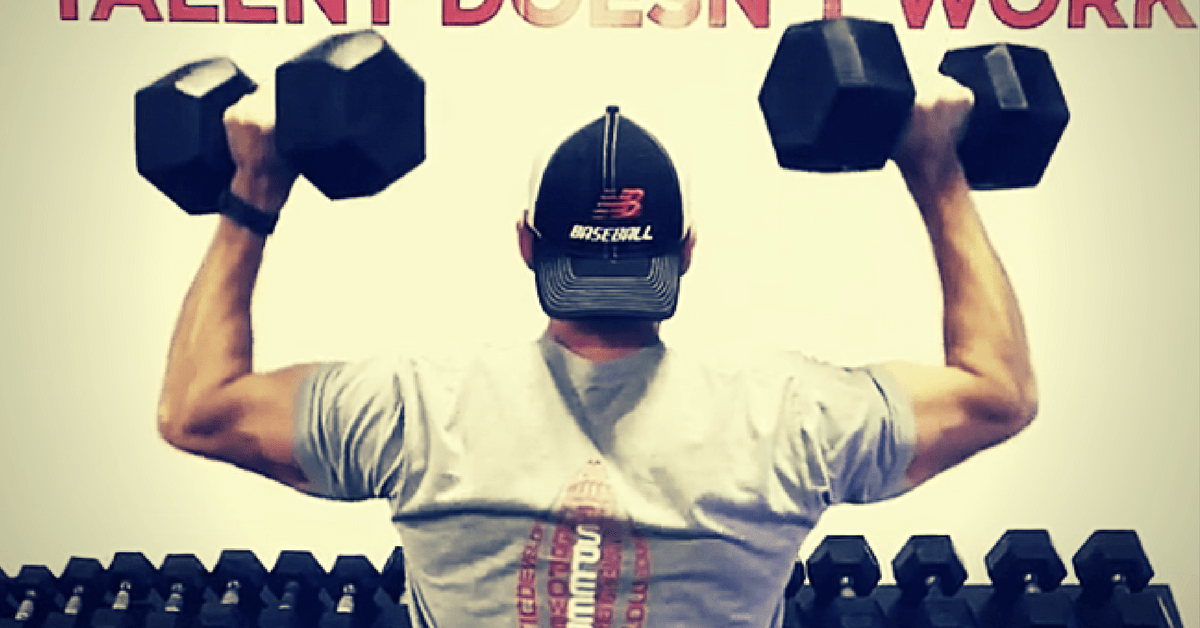From Jon Goodman: The human body is a wonderful, magical, and wholly complicated thing. No two clients' bodies are the same. This makes our jobs difficult.
The passage below from Eric is an example specific to him. In it he describes his nagging shoulder injury, what he’s learned about himself, and how he should train as a result.
The example illustrates a larger point: there's no one-size-fits-all. As you learn more about exercise, biomechanics, and physiology, never forget that no two bodies are the same.
I've got a wonky shoulder.
Actually, the term "wonky" probably doesn't do it justice. This is what an MRI in 2014 told me:
"There is a high-grade partial thickness articular surface tear of the posterior fibers of the supraspinatus that measures 15 mm AP x 15 mm RL. The undersurface tendon fibers are delaminated and retracted 15 mm.”
"There is a high-grade partial-thickness cartilage defect over the posterior medial aspect of the humeral head (near the posterior-superior labrum) with cartilage flap formation that measures 8 mm SI x 5 mm AP."
Three years have passed. It may be worse now. The truth is that the issue started with internal impingement during my high school tennis career, and gradually progressed over the years. In comparing the 2014 MRI to one I'd had in 2003, you see that the damage has progressed (as expected), but the symptoms have actually gotten substantially better.
My (occasional) pain is your gain, though.
You see, the symptoms (or lack thereof) can actually teach us a lot about how we view contraindicating exercises. I can bench press as heavy as I want with zero issues. Pull-ups, rows, pull-overs, overhead carries, landmine presses, Turkish get-ups are all completely asymptomatic. They're in my “safe exercise” repertoire.
And, as long as I don't go crazy with volume or intensity, I can throw a baseball just fine. I long-tossed out well over 200 feet with my pro guys consistently this offseason and that wasn't a problem either.
Overhead pressing, however, is weird for me.
If I tried to push-press 135 pounds, my shoulder would hate me for the next 6-8 weeks. Interestingly, though, if I keep the weight lighter, stick to dumbbells in the scapular plane, control the tempo, focus on perfect technique, and don't go crazy with volume, overhead pressing actually makes my shoulder feel better. So I work it in as an assistance exercise every other month.
https://www.instagram.com/p/BROQjcAgEkN/
Interestingly, though, back squats destroy my shoulder the most. This is consistent with an internal impingement diagnosis, but doesn't make a whole lot of sense when you consider that I can throw pain-free. Even if I just try to put a 45-pound barbell on my shoulders, it lights my shoulder up in a very bad way.
This weird collection of symptoms can teach us three really big lessons:
1. Everyone's symptoms and provocative patterns are completely different. Two people might have a very similar medical diagnosis, but dramatically different “safe exercise” repertoires.
2. Too often, we contraindicate simply to contraindicate exercises. In reality, we should be looking much broader and considering factors such as absolute loading, tempo, volume, and exercise technique.
We should contraindicate people from exercises, not exercises for people.
3. An individual's "safe exercise” repertoire may evolve over time due to changes in movement quality, tissue quality, recovery capacity, and structural integrity. Our programming needs to evolve to accommodate those changes, too.
Certainly, some exercises are inherently bad and not worth the risk, but it's important to evaluate each individual and situation individually to make the determinations on all those "middle of the road" exercises that deliver great training effects and make strength and conditioning fun.
This blog post originally appeared on ericcressey.com. It has been reposted here on The PTDC with permission.










